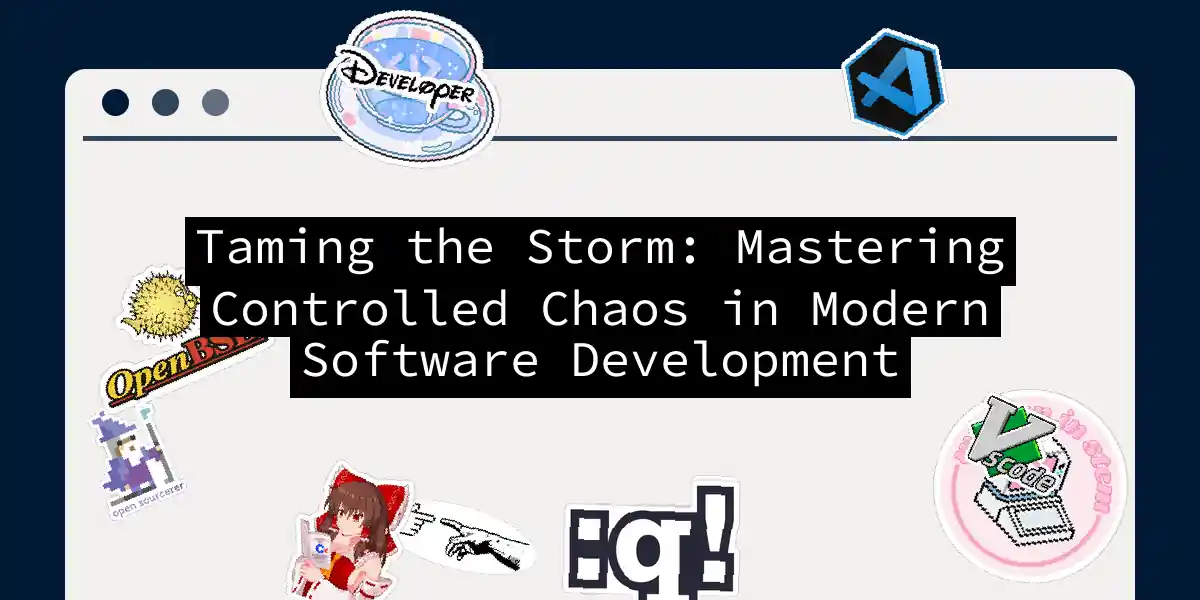Picture this: You’re juggling chainsaws while riding a unicycle through a minefield. Your product manager wants new features yesterday, your CI pipeline looks like abstract art, and that one legacy service keeps resurrecting like a zombie in a B-movie. Welcome to software development - the only industry where controlled chaos isn’t an oxymoron, but a survival skill.
The Chaos Mindset (Or How I Learned to Stop Worrying and Love the Glitches)
Great software isn’t built - it’s grown through a series of controlled explosions. The chaos model teaches us to embrace this reality through three fundamental laws:
- The Law of Entropic Progress: Every complex system contains at least 47 hidden edge cases (minimum)
- The Uncertainty Principle: Users will find ways to break your software that violate known physics
- The Murphy Compensation Corollary: If it can fail during demo day, it will
This isn’t just theoretical - when we implemented chaos testing at my last startup, we discovered our “fault-tolerant” microservices would rather start a mutiny than handle a simple database timeout. The fix? We taught them some manners with circuit breakers and a healthy dose of retry logic.
Scrum: The Art of Herding Schrödinger’s Cats
The Scrum framework is basically chaos theory applied to team dynamics. Here’s my battle-tested recipe for productive pandemonium: The 3-Day Sprint Survival Kit
def handle_sprint(sprint_goals):
while not sprint_done:
try:
current_task = random.choice(sprint_goals)
implement(current_task)
if random.random() < 0.3: # 30% chance of scope change
new_requirements = product_owner.wake_from_nap()
sprint_goals.append(new_requirements)
except ProductionFire:
deploy_fire_extinguisher()
update_retrospective_board()
The beauty? It works precisely because it doesn’t try to eliminate chaos. Like jazz musicians improvising, scrum teams thrive by:
- Making daily syncs feel like speed chess matches
- Treating sprint retrospectives as post-mortems for the living
- Using story points as probabilistic weather forecasts
Chaos Engineering: Breaking Things on Purpose (So Users Don’t)
When AWS had its annual “let’s pretend we’re Titanic” drill last year, our chaos experiments let us sleep through the outage. Here’s how you can weaponize chaos: The Chaos Chef’s Recipe
- Prep your kitchen:
# Install chaos toolkit
pip install chaostoolkit-kubernetes chaostoolkit-aws
- Season to taste (chaosfile.yaml):
experiments:
- name: Database connection pool stress test
steady-state-hypothesis:
http-status: 200
method:
- type: action
name: simulate-connection-storm
provider:
type: python
module: chaoslib.http
function: get
arguments:
url: http://api/db-stress-test
rollbacks: []
- Serve hot:
chaos run chaosfile.yaml
Pro tip: Start small (“what if one pod dies?”) before graduating to “what if the entire cloud region ascends to the digital afterlife?” Our team’s proudest moment? When our chaos experiments predicted a cascading failure pattern before it hit production.
The Controlled Chaos Manifesto
After a decade of dancing with software entropy, I’ve distilled three ironclad rules:
- Embrace the storm cloud
Every system contains latent chaos - your job is to make it perform on command - Fail like a Hollywood stuntman
Controlled crashes prevent uncontrolled explosions - Chaos is the best teacher
Every outage is a plot twist waiting to make your system more resilient The next time your monitoring lights up like a Christmas tree, remember: you’re not fighting chaos - you’re conducting it. Now if you’ll excuse me, I need to go trigger a controlled network partition. For science.
